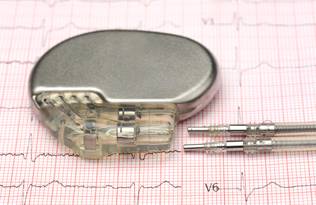Pacemaker
The pacemaker sends electrical pulses to your heart to keep it beating regularly and not too slowly.
Having a pacemaker can significantly improve your quality of life if you have problems with a slow heart rate. The device can be lifesaving for some people.
In the UK, pacemaker implantation is one of the most common types of heart surgery carried out, with many thousands of pacemakers fitted each year.
How a pacemaker works:
A pacemaker is a small device about the size of a matchbox that weighs 20-50g. It consists of a pulse generator – which has a battery and a tiny computer circuit – and one or more wires, known as pacing leads, which attach to your heart.
The pulse generator emits electrical impulses through the wires to your heart. The rate at which the electrical impulses are sent out is called the pacing rate.
Almost all modern pacemakers work on demand. This means they can be programmed to adjust the discharge rate in response to your body's needs.
If the pacemaker senses that your heart has missed a beat or is beating too slowly, it sends signals at a steady rate. If it senses that your heart is beating normally by itself, it doesn't send out any signals.
Most pacemakers have a special sensor that recognises body movement or your breathing rate. This allows them to speed up the discharge rate when you're active. Doctors describe this as rate responsive.








